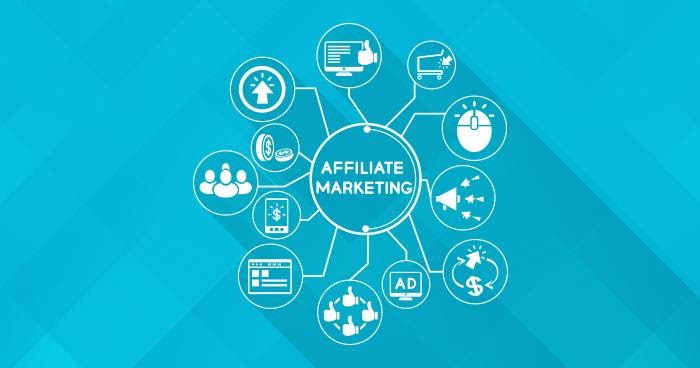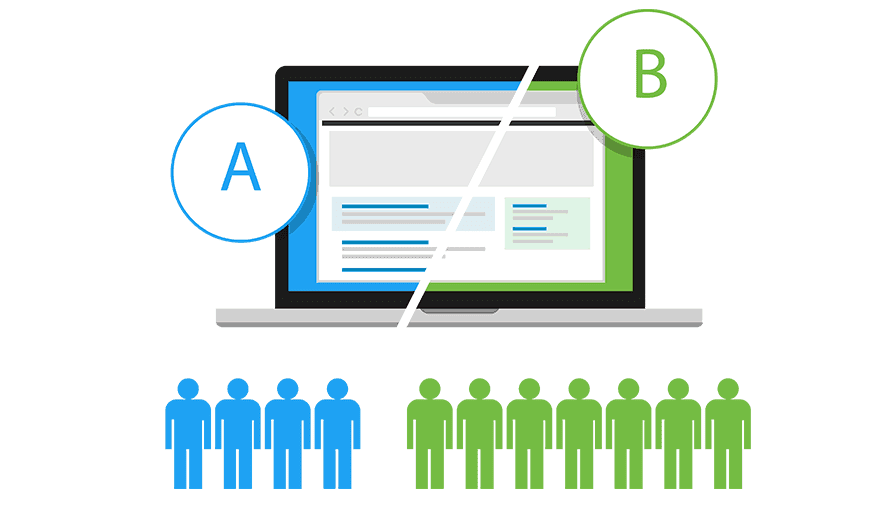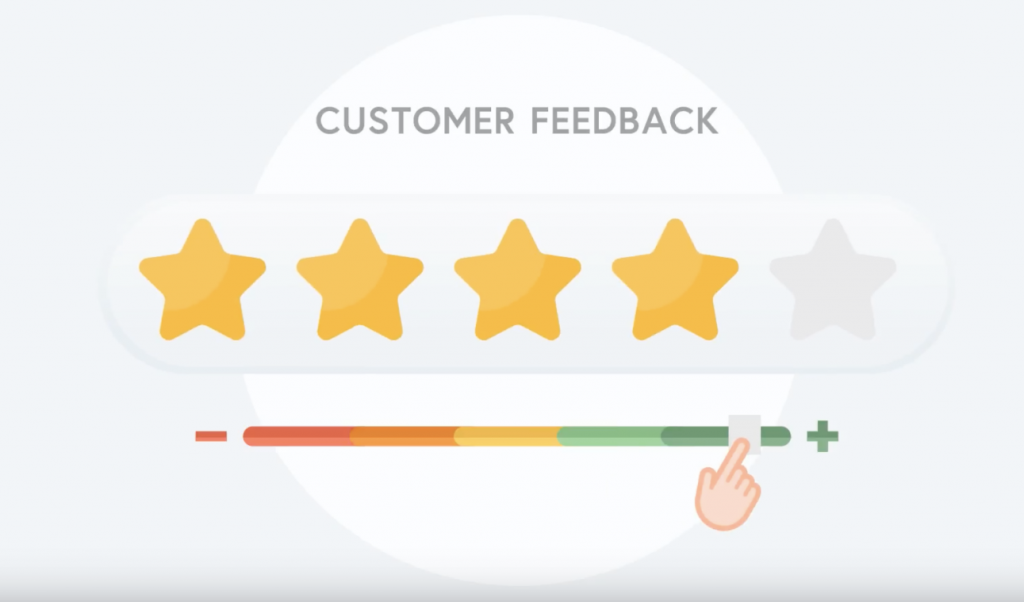Inbound, outbound, and direct marketing are one of the most common forms of B2B marketing strategies present today.
These shouldn’t be your only option.
Don’t get me wrong. Approaching the customer in real life is a very good option. But is displaying them your catalog in the hopes they look and purchase from it your only option?
The world has changed significantly over the past couple of years. Now it’s all about technology.
In order to take your business to the next level, you need to adapt. Nowadays buyers are smart and, regardless of whether they’re B2B or B2C, evaluate their purchases a lot more than they did before.
Google searches, forum discussions, and competitor research are just the tip of the massive iceberg that is the evaluation process.
In order to stay ahead of everyone else, you need to go digital. This involves applying a variety of B2B marketing strategies to get your products to the end user.
Now, you might be wondering which ones are the most important B2B marketing strategies prevalent today. well, we’re here to answer that question.
Keep on reading, because in this definitive post, you’ll find the top B2B marketing strategies you can use to grow your business.
So, let’s begin with the very first.
1. Search Engine Optimization

75% of the global desktop search traffic is routed through google, take a minute to think about that.
With so many queries passing through the search engine giant, doesn’t it make sense to optimize your B2B ecommerce store to make Google give it a better ranking?
The answer is self-explanatory. Search Engine Optimization plays a vital role in getting your site up in search engine rankings and provides you with high quality traffic that converts into paying customers.
Content, as we will discuss in the next section, is a vital aspect of your SEO strategy. Optimizing your content for SEO can prove to be vital.
The first step will obviously involve creating an SEO strategy. Ideally, it would involve you understanding the following factors in-depth.
- The audience.
- Algorithm changes.
- Trends.
- Technology and SEO tools.
SEO is the barebones essential of any B2B marketing strategy. It’s a long-term investment that, if done right, can mean a lot for your business.
2. Content Marketing

As we’ve already discussed, Content Marketing goes hand in hand with SEO. It’s a technique used by 76% of marketers looking to measure the success of their digital strategy.
In short, you can’t have a B2B marketing strategy without Content Marketing at its center.
When people talk about content, they usually talk about content writing and blogging. While blogging has been the staple of content marketing for a long while now, there are plenty of other mediums you can use to create content.
Podcasts, video content, infographics, motion graphics, eBooks, news articles, White Papers are all forms of content you can use. You can use a combination of these content marketing forms to get your word out to the world.
Content is getting revolutionized as the days are progressing. The primary goal of content creation is simple: Information Dissemination.
If you’re adding value to your content, and people are coming to read or watch it, then chances are high that there are some valuable leads in it as well.
Now, you might be asking how to get started with content marketing. Ideally you should start with creating a content calendar. Next, gather the topics you want to write about, and set a schedule when you would post that content.
Like SEO, success with content marketing doesn’t just happen overnight. It can take months and years with a handsome body of content for you to get adequate results.
If you’re patient enough, you can get a handsome Return on Investment (ROI).
But if you’re impatient, there is a solution.
3. Pay Per Click Search Advertising (PPC)

With a 50% higher conversion rate than organic marketing, PPC or Paid Marketing is slowly taking over the digital marketing sphere.
For B2B marketers, and business owners unwilling to wait for the results of organic marketing (SEO, Content Marketing), PPC advertising presents a wonderful opportunity to get quick returns.
Primarily done through Google, PPC advertising places an ad whenever a search query, or variation of it is searched online. The advertisers have to pay an upfront fee to purchase that advertisement space.
While what I say does make it sound easier, the process is a bit strategic. As a B2B marketer, you need to plan strategically in order to get the most value for your buck.
To get you started on the right track, you should consider the following steps as the bedrock of PPC strategy:
- Researching the right keywords.
- Organizing them into advertisement spaces that offer the most value.
- Set up landing pages detailing your business’ products and services.
If you take your time with designing the PPC advertisements, then you can gain significant results in the long run.
4. Affiliate Partnerships

Regardless of what critics say, B2B marketing is an efficient way to get your business noticed. A whopping 81% of brands use affiliates to improve their business, and you can too.
This part of your B2B marketing is a win-win situation for both the affiliate and you. You can promote each other’s products. Let’s see the three methods you can use to implement an effective B2B affiliate market strategy for your business.
- Reach out to relevant customers through webinars, conferences, interviews, etc.
- Recruiting social media influencers to your business.
- Go beyond your niche to recruit influencers within other niches to promote your products. Bear in mind, that you shouldn’t go very far beyond your niche.
5. Email Marketing

Whether you’re a Gen X-er or a Millennial, you’re going to have an email for one purpose or another.
B2B email marketing is an aged strategy that still works wonders. It’s aged like fine wine.
73% of millennials prefer communications to come through email. This means that there is a user base and a target audience in email.
Some of the most common ways you can implement an email marketing strategy include:
- Personalized email marketing.
- Selecting times to send out the emails.
- Developing mobile friendly emails that convert.
- Retargeting existing customers.
- Sending subscribers your weekly newsletter.
Even if you’re a B2B startup, email marketing is an easy-to-use method. Once you have all the emails at your disposal, you can use tools like MailChimp (available on all major b2b ecommerce platforms) to send out emails to prospective clients.
6. Virtual Reality

Predicated to rake in 52.1 and 83.1 million in 2020, AR and VR are technologies that are expected to rise in the coming years.
With games like Half-Life: Alyx succeeding in bringing the actual Virtual Reality experience to gaming, chances are there will be innovators and first adopters who will use these technologies for marketing their B2B products.
It’s not a thing of the past anymore. Major car manufactures like Volvo, and Porsche have started using AR/VR for test driving their cars.
The opportunities for being creative are endless. If you’re running a small B2B startup, your marketing strategy using VR/AR can be close to using the gear to view the product in 360-degree mode.
There are many benefits of using VR for eCommerce. Industries from tourism, home décor, real estate, to retail can benefit significantly from the medium.
7. Conversion Rate Optimization

Getting more traffic to your website is good, but it won’t matter much if the incoming user isn’t purchasing your product/service.
This is where Conversion Rate Optimization (CRO) comes into play. The range of activities used to convert a visitor into purchasing a product.
There are plenty of ways you can optimize your website for conversions:
- Better website navigation.
- Highly accurate in-website search results.
- Quick ordering tabs (B2B specifically).
- Improved page load speeds.
- Utilization of CTA’s in the right places to convert the customer.
You need to look from the perspective of the users, and how they react when they enter your website. Besides what we’ve mentioned before, there are plenty of ways you can optimize your site for conversion rates.
From the design of the site to the checkout, see where the problems are, and then implement strategies to fix them.
8. Get on Social Media

Is there a social media platform for a B2B business? Yes, there is and its name is LinkedIn. It’s a professional network for business owners and working professionals.
Besides conducting your B2B marketing operations on LinkedIn, you can use non-professional social media channels to get your brand’s voice out to the world.
If you’re feeling hesitant in approaching these networks for your marketing strategies, then you need only the example of Hubspot.
A B2B company, Hubspot has a very active and engaging Instagram page where they reach out to the audience.
You can get noticed, build relationships, and improve your business on LinkedIn relatively easily but you shouldn’t disregard the other social media platforms. Chances are, you might find professionals there as well.
Using these social media platforms, you should also start gathering feedback regarding your business. Social media responses are highly effective in helping you gauge where you are lacking in your product development and customer service.
In addition to that, social media helps you connect with the consumer as well. The more deeply you understand your customer, and the more you interact with them, the better your chances are at building a loyal customer base.
9. Conduct A/B testing

As discussed in the section on Conversions Rate Optimization, having traffic just isn’t enough. You’re doing all of this to get more leads, not visitors.
Now, within those leads, there are those who are ready to purchase (hot leads), who are interested in learning more (warm leads), and those who are not sure about the purchase and want to look at other options beforehand (cold leads).
So, even if your gaining leads from the traffic, you need to check the quality of leads dropping on your store.
Now, how you can ascertain the quality of lead that’s dropping on your store depends entirely on your niche and industry of operations.
This is where you can use A/B testing. Simply put, A/B testing is a marketing strategy that says, “If plan A doesn’t work, use plan B, and so on”.
The primary benefit this provides your B2B marketing strategy is that it allows you test the difference between which method is getting better leads for your business.
In general, you can use the following strategies to gain more valuable leads for your business.
- Utilize a wide variety of content marketing strategies (see Strategy#2).
- Test the layout, navigation, and overall design of your website.
- Test your website’s CTA’s to see if they’re placed in high converting areas (see Strategy #7).
Ideally you should test everything on your website. This follows along with the Strategy#7 discussed above: the more you optimize your site for conversion, the better the leads.
A/B testing just allows you to see which method is bringing in the most optimal leads.
10. Customer Feedback

There is no feedback more useful (and brutal) than customer feedback.
If understood correctly and implemented on, they can help you see customer sentiments and preferences towards your brand.
But here’s the main question: how can you get feedback from your customers? Well, there are two methods you can use.
Using a Live Chat System
Live Chat is a quick and effective way of getting feedback from the customer and engage with them. you should ideally keep it with you even if you’re not looking for feedback regarding your product or service.
Similar to Email Marketing, it’s an easy to use medium available on all B2B ecommerce platforms.
It’s an easy and effective method of communicating with the customer.
Personalized Customer Outreach
This is one of the most exciting ways of getting feedback for your business.
You can reach out to existing customers, and ask them about their feelings towards the product after purchase.
This comes under the umbrella of after-sales support and gives your practical information for product development and all your business processes.
While it does let you get feedback for your products and services, it also improves customer loyalty and the chances for getting referrals.
End Note
Whew!
You’ve finally reached the end of this article. In this post, we discussed B2B marketing strategies in detail. To give you run-down of what we discussed, here are the essential B2B marketing strategies:
- Invest in Search Engine Optimization and Content Marketing.
- Audit your site to improve conversion rates.
- Consider AR/VR technologies for b2b ecommerce.
- Get feedback from customers.
- Perform A/B tests to see what works and what doesn’t.
- Engage with customers and prospects on social media.
- Utilize email marketing, PPC, and affiliate marketing.
To not overwhelm you, we would recommend that you start with one or two of these factors and start tailoring your B2B marketing strategy to incorporate the next strategies step by step.
We hope you enjoyed reading this article.
B2BWoo is an all-in-one ecommerce bundle for WooCommerce. Built on top of the most popular ecommerce platform, B2BWoo provides you with everything you need to start a B2B store on WooCommerce.
If you’re a WooCommerce B2B store owner and want to enhance your productivity, then B2BWoo is the best option for you. It’s a one-stop-shop for your every WooCommerce B2B eCommerce solutions.
Read Also
- 5 Ways To Refine Your Omni-channel Strategy
- 11 Examples of B2B SaaS Companies Improving Business Productivity
- B2B Ecommerce Facts in 2021 Every B2B Leader Should Know
- Which B2B eCommerce Platform To Use For Your B2B eCommerce Site
- 5 Reasons Behind the Shopping Cart Abandonment and Tips on Preventing Them
- 10 B2B eCommerce Advantages To Capture Before Your Competition
